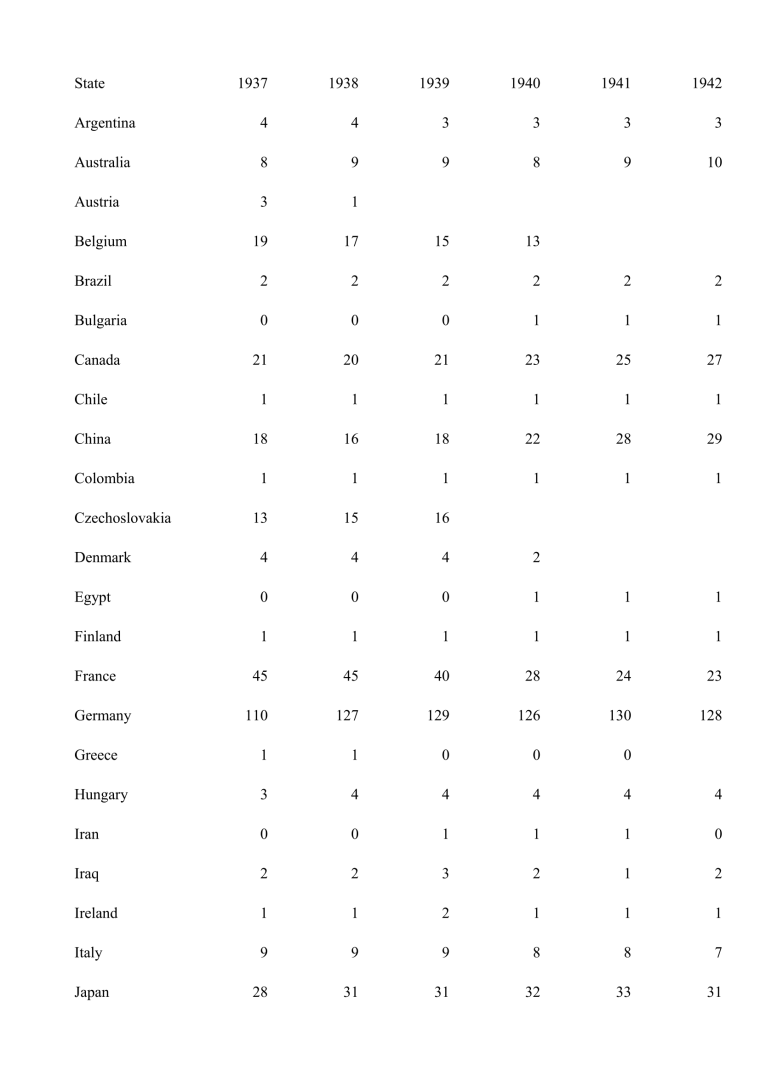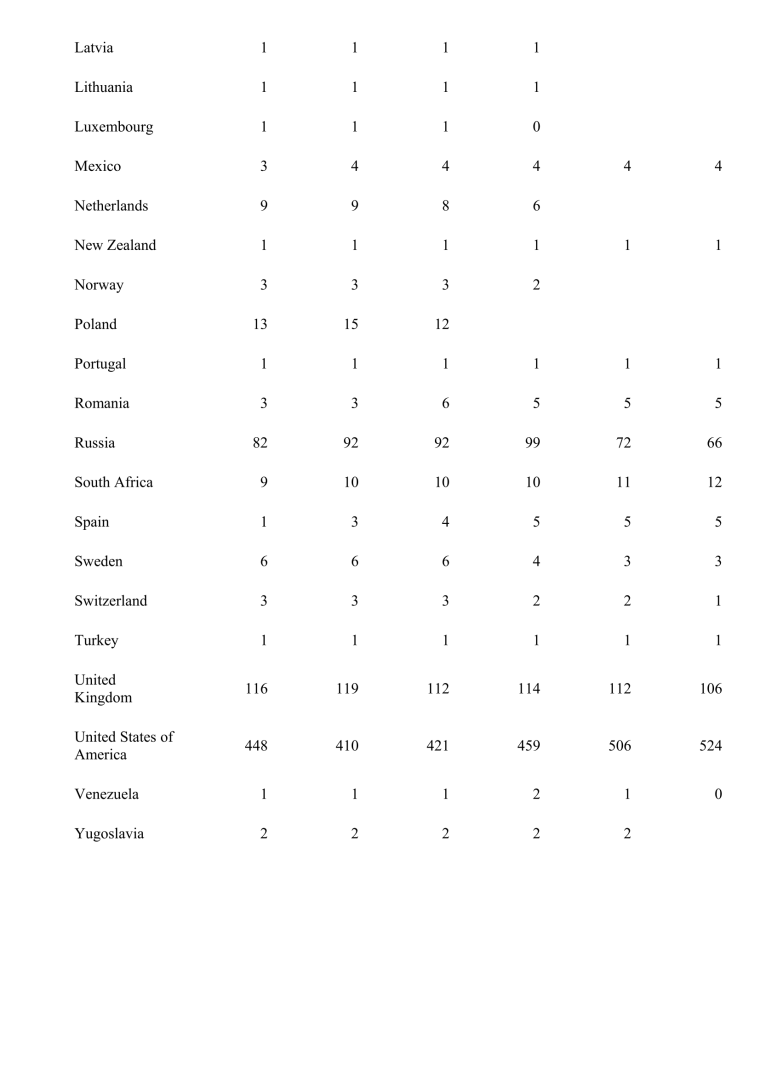How would you rate countries and territories considering realism in big WWII maps.
-
@schulz UK alone 1/4 than USA seems about right, but I would say all the British Empire can be 1/2 of USA. Adding any other non-British Americans (Brazil, etc.) to the U.S.A., like you usually do, would change relatively little.
-
Roughly what percentage of American resources were devoted to the Pacific front?
What about relative strenghts of other main combatants?
-
@schulz So that is not an easy question, and the real war had timeline dynamics that are quite afar from your average TripleA game. For example, the transports that you were using in Normandy you would, then, use in the Philippines, while in a TripleA game you don't keep moving naval stuff like it happened in reality, for the same reasons that nobody in any TripleA game I know of uses transports to load armours in England and go all around Africa to the Indian Ocean and then north in the Mediterranean to unload these armours in Egypt to then go west fighting the Italians, just because that would be too slow in game (but you can argue that the English were being dumb and should have just go invading Morocco and Algeria and push east from there, like the Americans did quite soon).
That said, if I would have to make a guess and as long as I'm not demanded to prove anything, I would say 75% Atlantic and 25% Pacific for the USA for the new stuff produced after declaring.
-
@cernel You can look at the Correlates of War website yourself. For GDP you can check out the Maddison Project.
I find the quality of data in the Correlates of War database to be lower than that of the Maddison database. However, the Correlates of War database is the only public database that includes military forces.
-
I think assuming British Empire, USA and the Soviets as the same powers for an Europe based wwii map would not be very unrealistic. In the wartime productions USA ahead but they were not producting them for only themselves or European fronts.
Comparing allies power is hard but I think this case is easier for European Axis powers. How would you rate Germany and Italy?
-
@rogercooper Maybe you didn't get what I said. What I said is that in my opinion it is hard to find the specific reference you used for getting those data starting from that site homepage. So I believe a link to the specific page or pages where the data at your previous post come from would be helpful.
Anyway I used this link, you provided:
http://www.rogercooper.com/documents/COW-Reformatted.xls
(it is not clear whether you made or reformatted this yourself or it was made by COW as well)So, for example, what I was saying is that I believe it is not easy to find where the following data is, in the original site.
Energy Consumption per Power (‰ of world total):


Anyways, the above values look pretty good to me, if one wants to have a basic reference for country based PUs production, albeit they tend to give a lot of value to quality over quantity (for example, you might disagree with Canada being about as powerful as China, in WW2). At least, energy consumption looks definitely more on the spot than other indexes, like steel production or GDP (for example, the first one would give an overly weak China and the second one would give an overly strong China).
The only significant issue that I see with the COW-Reformatted.xls is that there are no Energy Consumption values for India. I'm surprised about that. Are they missing in the COW site?
-
@cernel Maybe the biggest thing that would surprise me out of those values is that Poland would be stronger than Italy. I wonder if at those times Poland was more economically advanced than Italy. Also, maybe energy consumption overvalues countries in colder regions; no idea what is the relative impact of home heating on energy consumption.
-
In 1940:
Axis: Germany(126)+Denmark(2)+Norway(2)+Belgium(13)+Netherlands(6)+France(28)+Hungary(4)+Romania(5)+Bulgaria(1)+Yugoslavia(2)+Finland(1)+Italy(8)=198
Allies:Australia(8)+Canada(Assuming 9)+Egypt(1)+New Zealand(1)+Russia(99)+South Africa(10)+UK(114)+Latvia(1)+Lithuania(1)=244
Combine all axis/allies do not even make up USA in terms of energy consuption. Adding USA would make game unplayable. But suprisingly without US their values look close to each other.
-
@cernel Also, for a general relative comparison of all countries, I personally suggest taking the 1937 economic data over whatever that follows. The reason is that at the end of 1937 the United States of America had a major depression, that impacted differently on the various countries in the world; so the data for 1938 and 1939 is not as good as 1937 (it undervalues USA, etc.), while the data from 1940 onwards suffers from war events. Alternatively taking 1939 data and multiplying it by 1/(1-x), when "x" is the unemployment ratio for that country (not very good, as different countries account unemployment in different ways). 1937 would be just the year that minimizes the incidence of the Great Depression on the data (the United States of America, etc. will be undervalued anyways; just less so).
-
Another objectionable thing about these numbers is they do not reflect natural resorces, harbours, strategic locations, for example in this data Denmark and Norway are equal but Norway had oil and lots of harbours for German U-boats and located in more important area. I would say Norway deserve at least twohold or threefold more value. The same applies to Iraq or Iran.
-
@schulz said in How would you rate countries and territories considering realism in big WWII maps.:
Combine all axis/allies do not even make up USA in terms of energy consuption. Adding USA would make game unplayable. But suprisingly without US their values look close to each other.
The United States of America alone being able to produce more than all Axis countries and their conquered territories summed up is realistic, also since Germany was not getting out of the conquered territories as much as they were worth. After Barbarossa, you would also have to add to Axis something like half the current production of Russia (that would represent 1/3 of the production of Russia, had it not lost any territory), tho in reality Germany would get from it much less than the original owner (you would need some rule that lowers the production if the current owner is not the original owner, and that would make Axis even weaker, as it would also impact on France etc.). Vichy France would be in a special position, as well, about how much of its production it would give to Axis.
-
@schulz Where did you get the info that Norway had oil? I'm almost sure it had no oil at all.
-
Yes, I really would like to see Vichy France as combatant in big wwii maps though officaly she wasn't Axis militarily but economically she was and it had been constantly attacking by Allies. Vichy can be Axis country that's why I am favorable to stary it in 1940 rather than 1939. I would not really care balance in realistic game. Because Axis had realistically no chance but surviving for certain rounds rather than winning could be main axis goal.
-
Yes Norway has oil but I don't know did they have significant reserve during the war.
-
"""Lowering the production if the current owner is not the original owner,""" Really great idea does the current Triplea engine support this feature?
-
@schulz No direct way (of course, you can have a lot of triggers changing production under conditions, or maybe negative objectives; better you do that after you are very definitive on the production values tho).
-
USA would be only acceptaple maybe making Soviets doomed to fall, and giving Axis another advantages otherwise playing without USA is the only option.
-
@cernel I made the reformatted correlates of war file based upon the files they had. My file allows easy changes in the weighting of the variables.
COW includes India under United Kingdom.
Trying to put military/economic strength in a single number inevitably gives odd results. China & Canada have about the same strength but what does that mean? China could field vast forces of poorly-equipped infantry while Canada had a small modern military. Canada could project its limited military power world-wide, while China could only operate in its own country (or just across the border). To be realistic China should be able to build cheap infantry with 0 attack strength.
Almost no version of TripleA really considers the massive US economy. However, US power was somewhat reduced by its distance from the main theaters of conflict. The huge expenditures on merchant shipping were at the expense of actual combat forces.
Given the interest in this topic, I will revisit the databases and post information for WW2. The raw data from the sites can be hard to use, so I will normalize the data on total worldwide income of 1,000. I also have some interesting information from books and other games. Watch this thread.
-
@rogercooper said in How would you rate countries and territories considering realism in big WWII maps.:
COW includes India under United Kingdom.
Both for the values at your first post at this thread and in this reference:
http://www.rogercooper.com/documents/COW-Reformatted.xls
the United Kingdom is given as 3.1%~3.2% of the world population, from 1932 to 1941. That cannot possibly include the Indian Empire.My period atlas, printed in 1945, gives the Indian Empire without Birmania (before 1937 Birmania was part of India) at 338,119,154 people in 1931 and 388,832,000 in 1941. That would be about 17% of the world population.
Besides, mixing United Kingdom and India data together would be basically a statistical mess; so I don't believe they are doing that. However, taking a look at that site, I cannot find anything for India before 1947. Especially for the population statistics, missing India is going to seriously degrade your correlates of war, in the moment they are presented as a ratio of the world's total.
-
These raw poduction capacities really do not reflect their real powers totally becuse also there is somethings that played significant roles in wwII and they are not easiy measurable like production numbers.
As everybody know Allies had huge advantge in terms onf resources,manufacturing and manpower but on the other hand Axis had some advantages that Allies didn't have to take into account them before declaring countrie's relative values. For example according to these stats Germany should be 129, and US 421 but I would object this.
Germans had better generals, tactics, and trained army, more devoted population,they were better at exerting total war economy even they were be able to increase their gdp during wwii despite constant allies bombings.